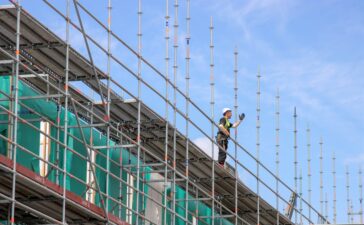Security cameras have become a vital component of modern-day safety and surveillance. They offer peace of mind by keeping an eye on your property and loved ones, whether you’re at home or away. However, like any technology, security cameras can sometimes encounter connectivity problems that disrupt their online presence. In this troubleshooting guide, we will explore common issues and solutions to ensure your security camera stays online and operational.
Understanding Why Security Cameras Go Offline
Security cameras are engineered to deliver uninterrupted surveillance; however, a range of factors can result in their offline status. Understanding the underlying reasons your security camera could be offline is crucial for effective troubleshooting and issue resolution.
Common Issues and Troubleshooting Solutions
Let’s delve into some of the most frequent issues that can cause your security camera to go offline and explore practical solutions to rectify them:
1. Network Connectivity Problems
Issue: The problem of weak Wi-Fi signals or frequent network interruptions can significantly disrupt your security camera’s connectivity, potentially leading to surveillance gaps and security concerns.
Solution:
- Ensure that your camera is within the range of a strong Wi-Fi signal.
- Check for any network outages or disruptions from your Internet Service Provider (ISP).
- Consider installing Wi-Fi extenders or a mesh network system to enhance signal coverage.
2. Power Supply Issues
Issue: The problem of power disruptions, whether caused by electrical outages or drained batteries in battery-operated cameras, can result in your security camera going offline. This can lead to surveillance gaps and potential security risks that need to be addressed.
Solution:
- Verify that your camera is receiving a stable power supply.
- Use uninterruptible power supplies (UPS) to safeguard against power outages.
- For battery-powered cameras, keep spare batteries on hand and replace them as needed.
3. Camera Hardware Failures
Issue: The problem of hardware malfunctions, such as components overheating or sensor issues, can disrupt the normal operation of your security camera, resulting in unexpected downtime.
Solution:
- Ensure that your camera is installed in a well-ventilated area to prevent overheating.
- Regularly inspect camera lenses and sensors for dirt or damage.
- Contact the manufacturer’s customer support for hardware-related issues and warranty information.
4. Camera Firmware Updates
Issue: The issue of outdated camera firmware can create significant problems by introducing compatibility issues and disrupting the connectivity of your security camera, ultimately compromising its effectiveness in providing continuous surveillance and security.
Solution:
- Check for firmware updates on the camera manufacturer’s website or through the camera’s mobile app.
- Follow the manufacturer’s instructions to update the camera’s firmware.
- Ensure that your camera’s firmware is compatible with your router and other network devices.
5. Router Configuration Issues
Issue: The problem of incorrect router settings, including blocked ports and improper security configurations, can severely disrupt your camera’s connectivity, causing potential surveillance gaps and security concerns.
Solution:
- Review your router settings and ensure that the camera’s required ports are open.
- Disable any security features that might interfere with camera connectivity.
- Consider setting up Quality of Service (QoS) to prioritize your camera’s traffic on the network.
6. Interference from Other Devices
Issue: The interference caused by nearby electronic devices or appliances emitting strong signals poses a significant problem, potentially disrupting your camera’s connection and compromising the effectiveness of your surveillance system.
Solution:
- Identify and relocate devices that may be causing interference.
- Use Wi-Fi channels with less congestion and interference.
- Invest in Wi-Fi routers equipped with beamforming technology for more precise signal transmission.
7. Cloud Storage or Subscription Issues
Issue: Experiencing disruptions in a cloud-based security camera system due to issues with your cloud storage subscription or the cloud service itself can be a significant problem, potentially affecting your ability to access critical surveillance footage when needed.
Solution:
- Verify the status of your cloud storage subscription and ensure it is active.
- Contact your cloud service provider’s support if you encounter issues with their service.
- Consider using local storage as a backup option for critical footage.
8. Unauthorized Access or Tampering
Issue: The problem of security breaches or tampering attempts poses a significant risk, as it can result in your cameras going offline, potentially leaving your property vulnerable to unauthorized access or intrusions.
Solution:
- Strengthen your camera’s security by using strong, unique passwords and enabling two-factor authentication.
- Regularly monitor camera feeds for any unusual activity or unauthorized access.
- Install security measures such as motion-activated lights or alarms to deter tampering.
Conclusion
Security cameras are valuable assets for safeguarding your property and loved ones, but they can face connectivity challenges from time to time. By understanding the common issues that can cause security cameras to go offline and implementing the appropriate troubleshooting solutions, you can ensure that your surveillance system remains reliable and effective.
Remember that consistent monitoring, proactive maintenance, and timely updates can go a long way in keeping your security camera online and your peace of mind intact.







